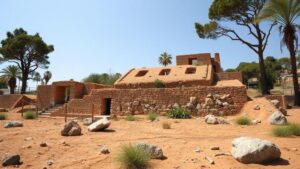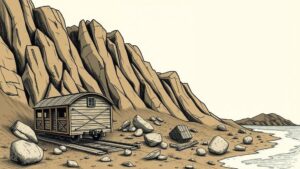Researching Frontier Settlements for Pioneer Artifacts and Gold Deposits
Researching Frontier Settlements for Pioneer Artifacts and Gold Deposits
The study of frontier settlements offers a rich tapestry of history, intertwined with the legends of gold deposits and the artifacts left behind by pioneers. This academic exploration seeks to uncover the significance of these settlements through archaeological research, historical documentation, and cultural analysis. By focusing on key regions known for frontier activity, particularly during the California Gold Rush (1848-1855), this research aims to provide a comprehensive overview of methodologies and findings associated with locating and interpreting pioneer artifacts and gold deposits.
Historical Context
The California Gold Rush marked a pivotal moment in American history, propelling thousands westward in search of prosperity. Initiated by James W. Marshalls discovery of gold at Sutters Mill in January 1848, the rush fundamentally transformed Californias demographic and economic landscape. By the end of the Gold Rush, an estimated 300,000 people had migrated to California, leading to a boom in settlement, population, and infrastructure.
Frontier settlements in regions such as Sacramento, Nevada City, and San Francisco not only served as hubs for gold mining but also as social and commercial centers for early pioneers. importance of studying these sites lies in their potential to reveal much about the daily lives, aspirations, and challenges of those who settled in these liminal spaces.
Methodological Approaches
Archaeological Investigations
Archaeological methods are paramount in uncovering artifacts and understanding pioneer life. Investigators often employ techniques including remote sensing, soil analysis, and excavation. Remote sensing, for instance, utilizes technologies such as Ground Penetrating Radar (GPR) to identify subsurface features without extensive digging. Findings from surface surveys can indicate areas of historical significance based on artifact distribution.
- A study conducted in 2019 near Nevada City uncovered over 1,500 surface artifacts in a single survey, enhancing the understanding of settlement patterns.
- Excavations at a site in Mariposa County revealed remnants of mining equipment, indicating not only the presence of gold but also the living conditions of miners.
Historical Document Analysis
Also to archaeological methods, examining historical documents such as diaries, letters, and mining records provides context to physical evidence. The California State Library and archival institutions house collections that detail personal accounts of pioneers, offering insights into their experiences and motivations. For example, diary entries from miners often illustrate the hardships faced during their pursuits, thus contextualizing the artifacts found at mining sites.
Significance of Artifacts
Pioneer artifacts serve as tangible links to the past, providing invaluable information about daily life, social structures, and technological advancements of the time. Common artifacts include:
- Mining tools, which reveal the methods used in gold extraction.
- Personal items such as clothing and household goods, which inform us about the daily life and societal norms.
- Commercial goods, indicating the trading practices and economic conditions of frontier settlements.
For example, examining a set of brass scales found at a trading post site indicates the existence of a barter economy and a need for weighing precious metals.
Gold Deposits and Economic Implications
The identification of gold deposits has significant implications, both historically and economically. The lure of gold was not only a personal journey for wealth but also a catalyst for change in California and the broader western United States. Geographic information systems (GIS) are increasingly employed in contemporary research to map historical gold deposits, guiding new explorations and potential excavations.
The U.S. Geological Survey (USGS) reports that California holds approximately 89% of the United States historical gold production, with many old mining camps now the focus of tourism and historical research. For example, the town of Grass Valley continues to attract historians and treasure hunters alike, with recent studies indicating that there may still be unmined gold deposits in the area.
Conclusion
Researching frontier settlements for pioneer artifacts and gold deposits not only enriches our understanding of American history but also engages with the ongoing narrative of discovery and settlement in the west. The multidisciplinary approach encompassing archaeology, historical analysis, and modern technologies presents a holistic view of frontier life.
Actionable takeaways from this research include:
- Utilizing interdisciplinary methods can enhance the depth of historical research.
- Collaboration between archaeologists and historians is essential to fully comprehend the complexities of frontier life.
- Encouraging public interest through programs focused on pioneer heritage can stimulate local economies through tourism.
As scholars continue to explore this dynamic aspect of American history, it becomes clearer that the remnants of the past hold vital lessons for the communities that inhabit these frontiers today.


